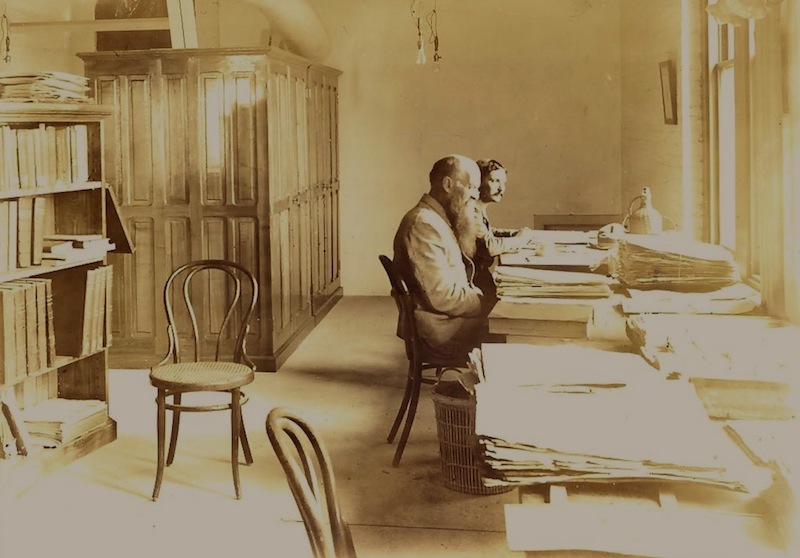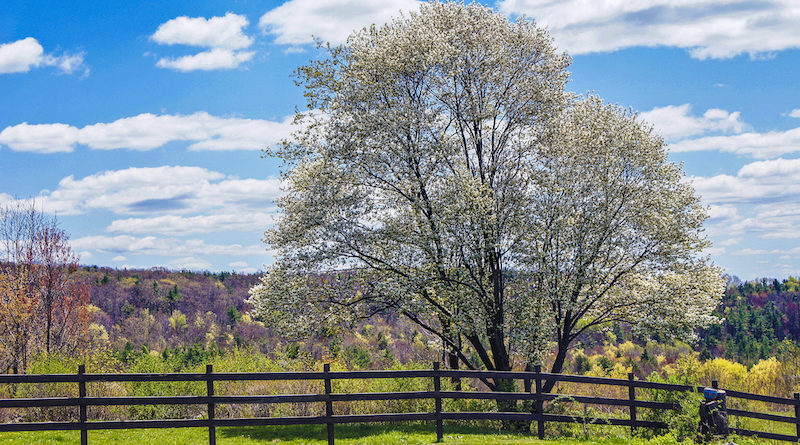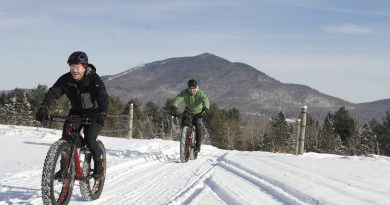One of the Most Prolific Plant Collectors in History Was a Vermonter
At 19, Cyrus Pringle budded a small apple tree on his mother’s farm in East Charlotte. By the time he died, he’d become one of the top five most prolific plant collectors in history.
BY LEATH TONINO
Have you heard of Cyrus Pringle? I hadn’t until recently, which is a surprise, considering that we both are natives of Charlotte. But you know how it goes: we forget the old heroes, the old stories; rushing this way and that, we lose track of our history, of who lived on the farm across the way.
Here’s Bob Nicholson, manager of the Smith College Botanic Garden, introducing Pringle:
“If Henry David Thoreau created the model for the New England activist-biologist, then perhaps its finest exemplar was a modest man from the hills of Vermont, Cyrus Guernsey Pringle, whose very name resonates with agrarian Yankee rectitude. Beginning in humble circumstances, Pringle went on to capture the attention of an American president, work with legendary Harvard botanists, and achieve a record of botanical fieldwork in Mexico that is unsurpassed today.”
A Vermonter in Mexico?
Pringle was born in 1838. He attended University of Vermont for a semester but quit school in order to help his widowed mother on the family farm. By his early twenties, he was known as a gifted horticulturalist; he invented a hybrid potato, the Snowflake, which became extremely popular, and ran a “bulb hospital” where people could send ailing plants. He was also a Quaker, as was his young wife, and when it came time to fight in the Civil War, he refused. Imprisoned, tortured (staked to the ground on his back and left in the sun for a day!), and threatened with death, he was at last thrown into a Washington D.C. hospital. It wasn’t until Abe Lincoln himself stepped in to grant a pardon that Pringle could return to his beloved plants.
But all of this is just backstory. The real narrative begins when Pringle transitioned from breeding plants to collecting them. His wife separated from him in 1872 (she wanted to travel and do evangelistic work, and he wanted to botanize), and over the following years he covered pretty much all of Vermont, from alpine summits to rock-choked gorges, and was duly recognized by the famous scientists down at Harvard and the Smithsonian as a sort of genius. Commissions to go on collecting expeditions followed (Maine, Quebec, et cetera) and by 1884 he was out West, preparing to plunge into the unstudied wilds of Mexico.
Pause for a second and try to picture just how wild those wilds were back then. A letter Pringle wrote from Mexico gives a taste: “My own troubles, during my first years here and the several failures of healthy young men coming here with me [read: Vermonters he brought along who got malaria and had to be sent home], may give you a hint—a slight hint—of the difficulty of living and traveling in this country and carrying on the work which I have undertaken. The long marches under a tropical sun (one burdened with his necessary outfit of food, water, etc. and with his increasing collections), the laborious climbing and clambering over terrific, often perilous mountains, the patient undefatiguable [sic] gleaning after rare plants growing scattered, the obstacles interposed by the storms, peculiar to these regions, sometimes by wild beasts and rarely by the inhabitants of the country—all these difficulties are forgotten, when the collector gets home at the end of the year with his stores of booty, but they rise in his way as he enters his field again.”
For 26 field seasons (up until the last year of his life), Pringle traveled the Mexican deserts and mountains, working between nine and noon, eating the same lunch of bread, cheese, and eggs, sheltering from monsoon rains under a crumpled felt hat. On the way home, he collected as well.
He was that classic Yankee of yesteryear: shy, tough, humble, precise, principled, nature-loving, work-minded. He didn’t drink tea or coffee or alcohol, and never took a day off. His preference was to botanize alone, and yet he was known and respected across Mexico (The Mexican Herald referred to him as one of the most brilliant and scholarly men ever to grace the country with his presence). Above all, Pringle was obsessed. An associate once wrote: “He liked to boast—his only jest of this sort—that he could call over 10,000 plant acquaintances, and a few botanical friends, by their proper names—though he was not certain as to who the president in Washington might happen to be.”
Pringle was a true Vermont farm boy, a lifelong resident of the Champlain Basin, and yet his expeditions led him so, so, so far away; in a sense, he pursued a dual life, part North Woods, part South of The Border. At one point, he traveled 56,000 miles, by train and by burro and by foot, in four consecutive years. Every trip began and ended in Charlotte, just down the road from my childhood home. This famous botanist, and the preeminent expert on Mexican flora, launched his expeditions from the same patches of weeds that I romped in as a child.
Today, the Pringle Herbarium at the University of Vermont holds many thousands of dried, mounted specimens collected by the man himself, including hundreds of species that were new to science when he discovered them. It’s a world-class facility, a research hub, a library of plants ranging from New England to Oaxaca. And yet, as I said at the start of this essay: we forget the old heroes, the old stories; rushing this way and that, we lose track of our history, of who lived on the farm across the way.
Cyrus? A Vermonter in Mexico?
Let’s take a moment to remember. Let’s close our eyes and see before us a neighbor collecting ferns in the mossy woods, climbing Camel’s Hump and Mt. Mansfield in search of alpine specimens, making his way to Arizona, to Mexico, making his way back home, always back home. During the last hour of his life, delirious, Pringle mumbled fondly of his adventures in Mexico. It’s a powerful image—the tropical flowers of a long career blossoming in the dying botanist’s imagination, New England springtime greening outside the window.



